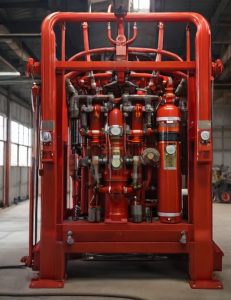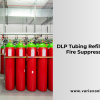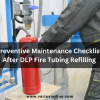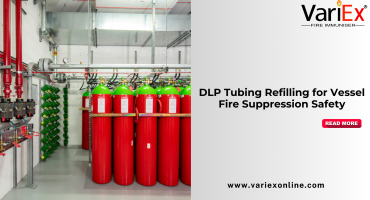![]()
Fire Immuniser
+91-7829629111
Email: info@variex.in
Varistor Technologies Pvt. Ltd.
Block-1, First Floor, Ardente Office One, Hoodi Circle, ITPL Main Road, Bengaluru, Karnataka 560048, IN
What Is Common Console In Fire Fighting System
In the world of fire safety, common console in fire fighting systems plays a critical role. It serves as a control center that coordinates and monitors various fire protection devices and systems in a building or facility. This article will provide an in-depth understanding of what a common console is, its components, and its significance in the overall fire fighting system.
What is a Common Console in Fire Fighting System?
A common console is a centralized control panel that brings together multiple fire protection systems into a single interface. It acts as a hub for monitoring and controlling fire alarms, sprinkler systems, smoke detectors, fire suppression systems, and other essential fire fighting devices. With a common console, facility managers and fire safety personnel can keep a watchful eye on the entire fire protection network from one location.
Components of a Common Console
A typical common console includes various components that enhance its functionality and facilitate effective fire safety management:
1. Control Panels: These panels provide a visual representation of the entire fire protection system, indicating the status of various sensors, detectors, and alarms. Control panels also allow for manual control of fire suppression systems.
2. Communication Interfaces: Designers often design common consoles to integrate with other building management systems, enabling seamless communication and data sharing. These interfaces can include Ethernet ports, RS-485 connections, or wireless protocols.
3. Monitoring Equipment: Consoles commonly have monitors that display real-time data from fire alarms, smoke detectors, and other fire protection devices. These monitors provide a clear visualization of the building's safety status.
4. Alarm Management: An important component of a common console is the alarm management system. It helps identify and locate fire incidents, trigger audible and visual alarms, and alert the appropriate authorities.
5. System Integration: A common console integrates various sub-systems of a fire fighting system, enabling streamlined operation. This integration allows the console to receive data from multiple sources and take necessary actions based on predefined protocols.
Significance of a Common Console
The presence of a common console in a fire fighting system offers several significant advantages:
1. Streamlined Monitoring: With a common console, monitoring and controlling various fire safety systems becomes more efficient. By consolidating information and controls in one place, operators can promptly respond to emergencies and take necessary actions.
2. Centralized Management: A common console provides a central point of command for fire safety operations. Facility managers and authorized personnel can easily access critical information, analyze data, and make informed decisions without having to move between different systems.
3. Enhanced Safety: By integrating different fire protection systems, a common console ensures enhanced safety measures. Real-time monitoring and quick response mechanisms minimize potential risks and help prevent fire incidents from escalating.
4. Improved Maintenance and Troubleshooting: Common consoles provide a comprehensive overview of the entire fire fighting system, simplifying maintenance procedures and troubleshooting processes. Having all information readily available allows technicians to quickly identify faults and resolve them efficiently.
5. Data Analysis and Reporting: Common consoles often come equipped with data analysis tools, enabling facility managers to review historical fire safety data, identify patterns, and make informed decisions regarding system improvements or modifications.
Conclusion
In conclusion, a common console is a vital component of any fire fighting system. It serves as a centralized control panel that integrates various fire protection systems into one interface. By consolidating information, monitoring devices, and providing centralized control, a common console enhances the efficiency, effectiveness, and safety of fire safety operations. Its significance lies in streamlined monitoring, centralized management, enhanced safety measures, simplified maintenance, troubleshooting procedures, and data analysis capabilities. Incorporating a common console into a fire fighting system is a smart decision for any facility or building concerned with the utmost safety and protection against fire incidents.
Frequently Asked Questions
Q1. What is a common console in a fire fighting system?
A common console in a fire fighting system is a central control unit that allows operators to monitor and control various aspects of the system. It consolidates all critical information and controls into a user-friendly interface for easy access and management.
Q2. What are the key features of a common console in a fire fighting system?
Some key features of a common console include real-time monitoring of alarms and system status, control of fire suppression systems, integration with other safety systems, data logging and reporting capabilities, intuitive graphical user interface, and remote access for authorized personnel.
Q3. How does a common console enhance fire safety in a building?
By centralizing control and monitoring functions, a common console enables efficient management of fire safety systems. It allows operators to quickly detect and respond to alarms, coordinate emergency response actions, and access important system information in real-time. This enhances overall fire safety and helps minimize potential damage and risks to occupants.
Q4. Can a common console integrate with other fire protection and security systems?
Yes, designers commonly design a console to integrate with various fire protection and security systems, such as fire alarm systems, sprinkler systems, smoke detectors, access control systems, and CCTV cameras. This integration enables seamless coordination between different systems and enhances overall safety management.
Q5. How easy is it to operate a common console in a fire fighting system?
Common consoles are designed with user-friendliness in mind. They typically feature intuitive graphical user interfaces that provide clear visualizations of system status and controls. Operators can easily navigate through menus, view alarms and alerts, and perform necessary actions with minimal training.
Q6. Are common consoles customizable to meet specific requirements?
Yes, common consoles can be customized to meet specific requirements and preferences. They offer flexibility in terms of layout, display options, and integration with third-party systems. This allows for seamless integration and adaptation to different fire fighting system setups and operational needs.
Q7. Can a common console provide remote access for monitoring and control?
Yes, most common consoles offer remote access capabilities. Authorized personnel can securely access the console's interface from remote locations, allowing them to monitor system status, receive alarms, and perform necessary actions without being physically present at the control room. This provides added convenience and efficiency.
Final Say
We at VariEx.in or Variexonline.com have mastered the art of designing, installing, inspecting, and fixing automatic sprinkler systems with the help of our in-house team, which is capable of delivering the fire sprinkler services you need, whether large or small and at affordable cost.
To schedule a fire sprinkler installation, or you think our services could benefit your commercial property, contact us online or give us a call at, 7829629111
"WHAT YOU CAN READ NEXT"
 Read more +24 November 2023 in Fire Extinguisher
Read more +24 November 2023 in Fire ExtinguisherWhat types of fire extinguishers are available for different fire classes?
 Read more +11 July 2025 in Fire Suppression
Read more +11 July 2025 in Fire Suppression







